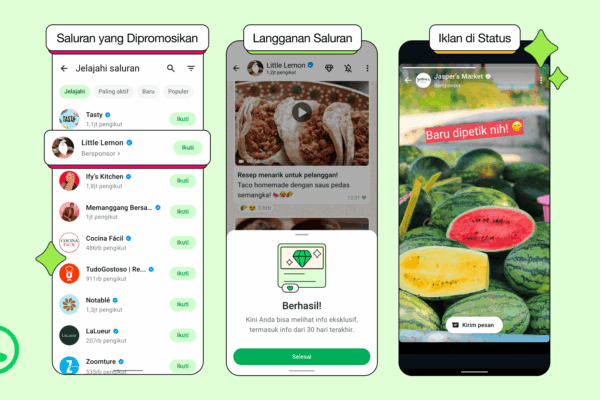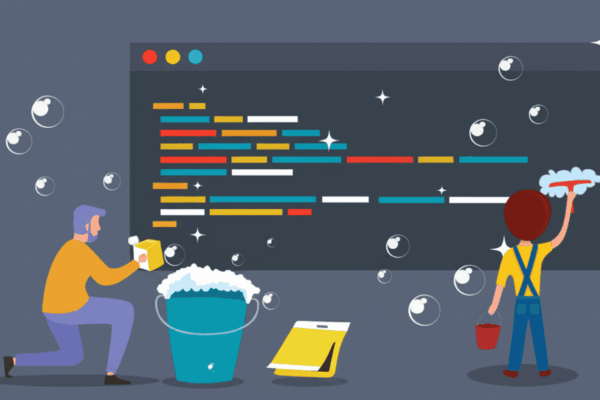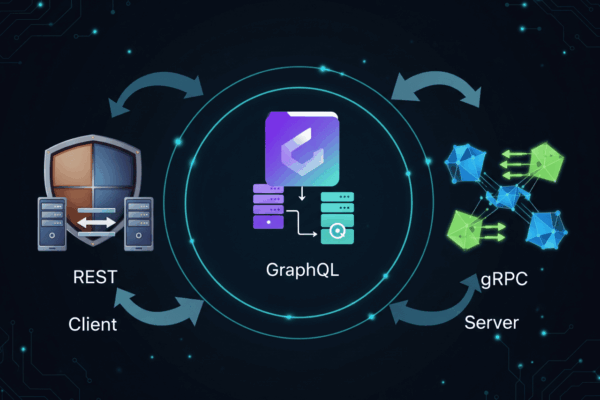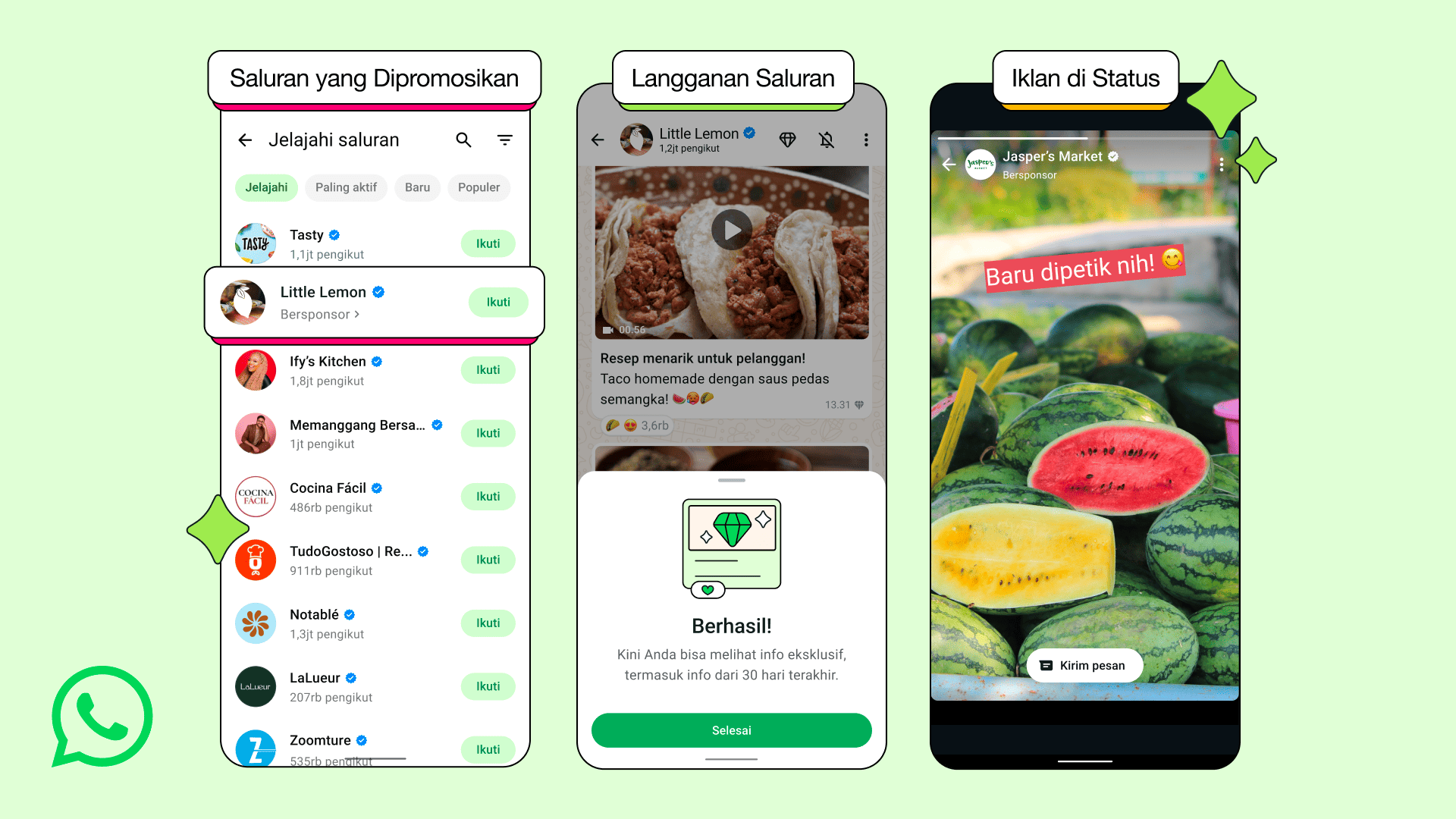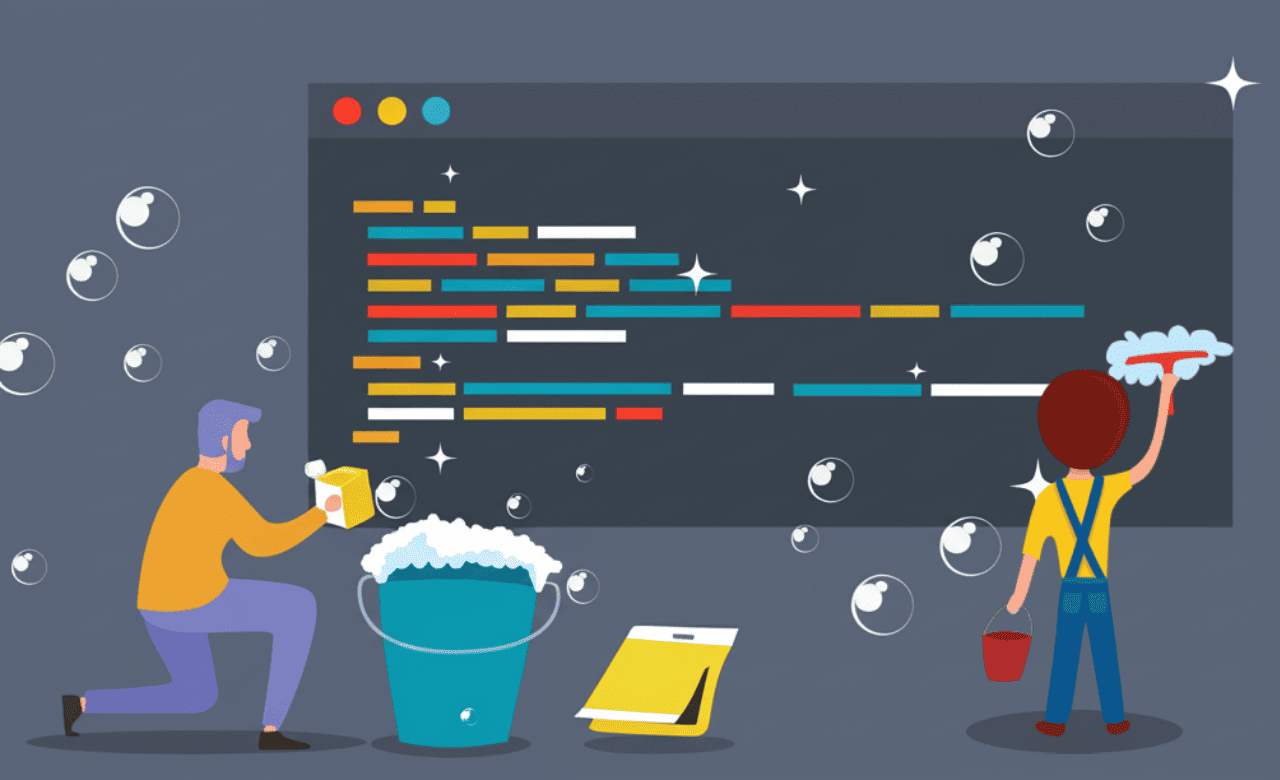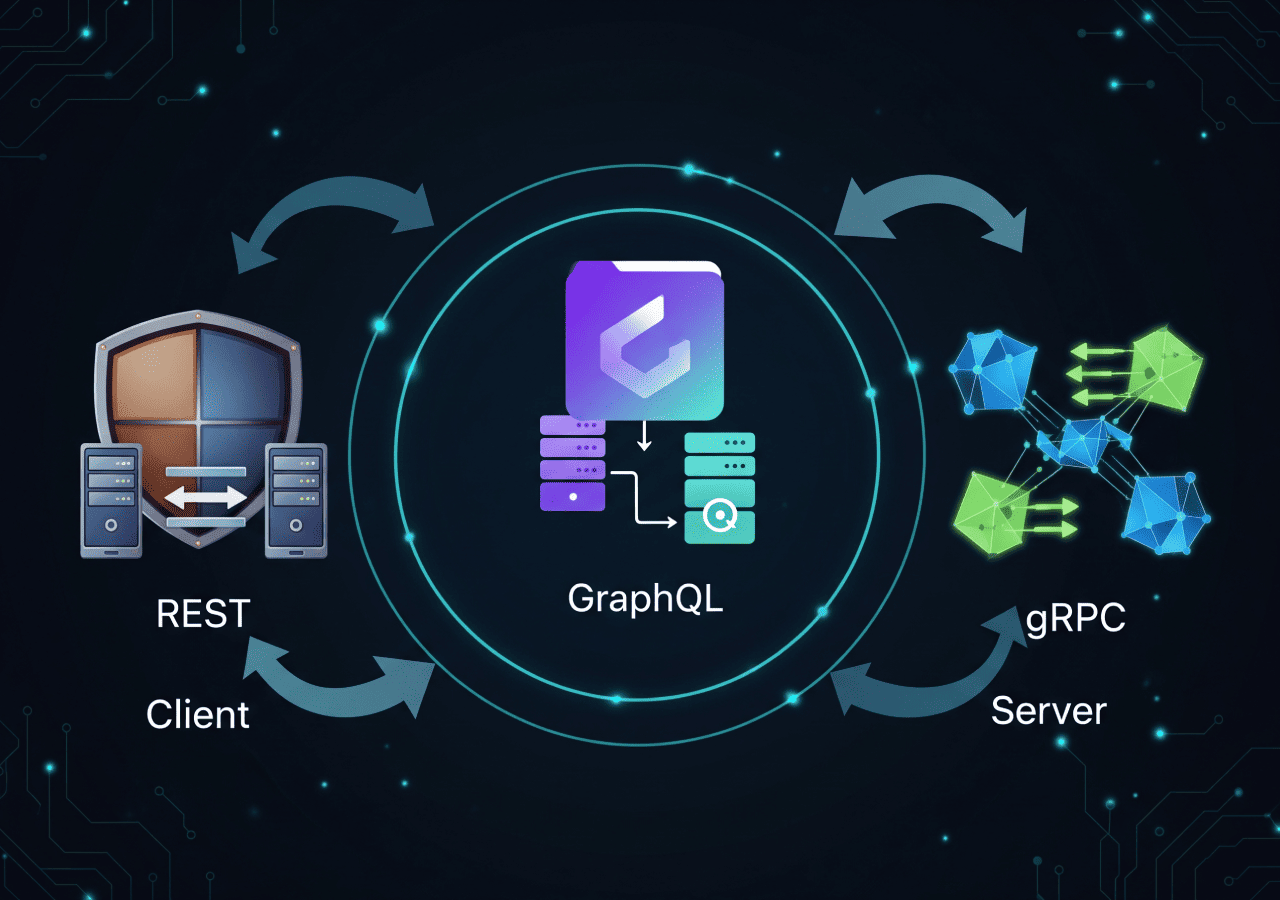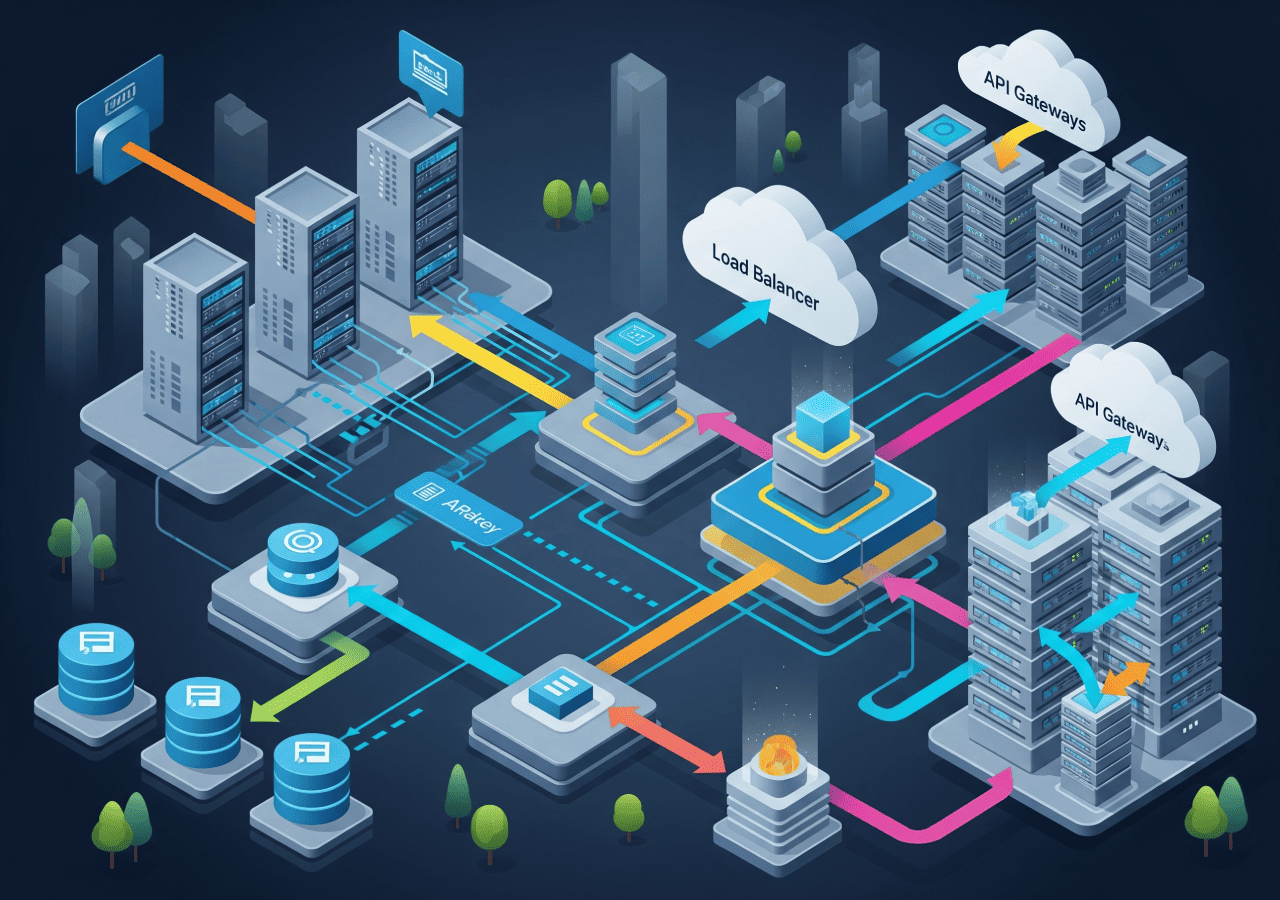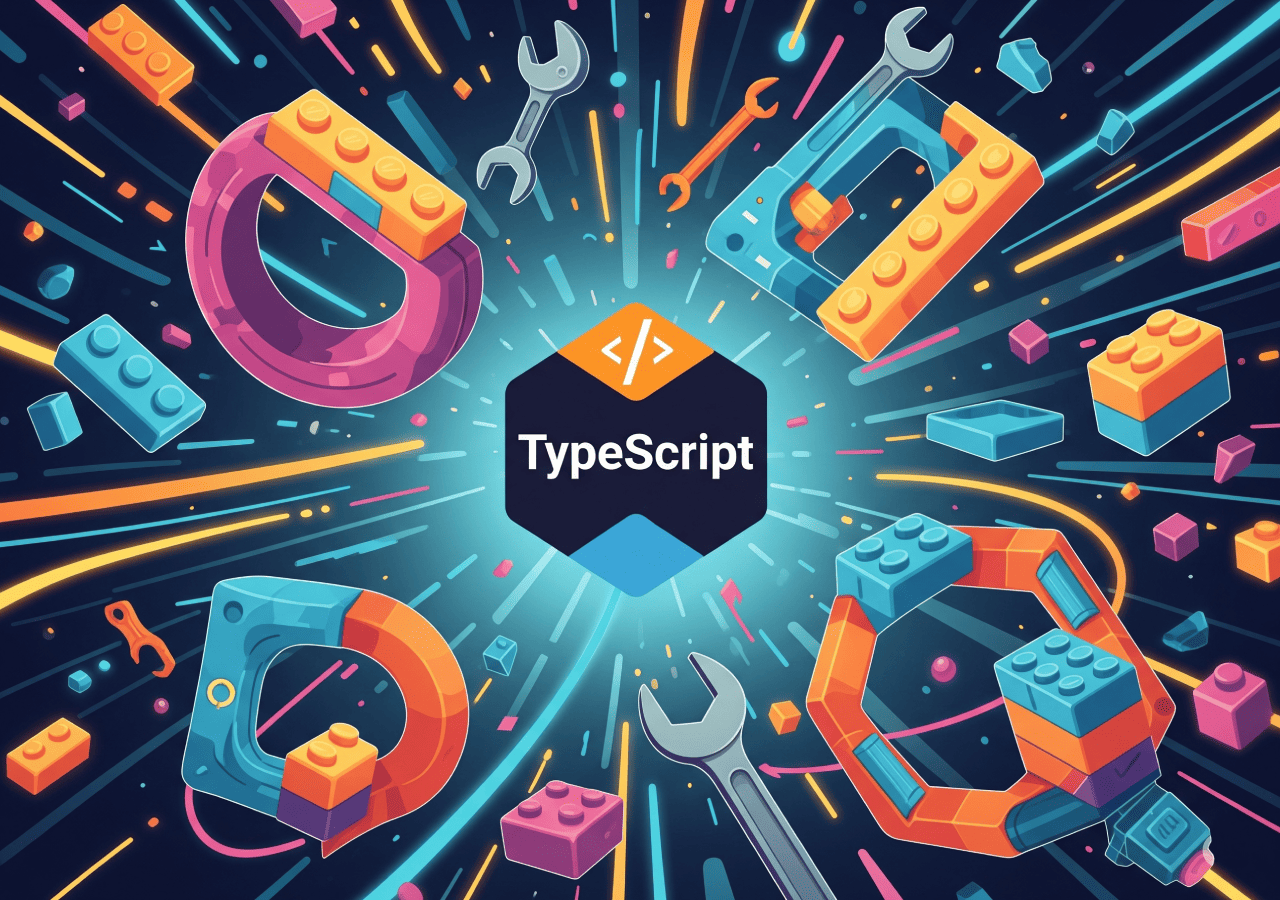In the world of modern application development, an API (Application Programming Interface) is the backbone that enables different parts of your application, or even entirely different applications, to communicate. Choosing the right API design architecture is a crucial decision that will impact your application’s performance, scalability, and ease of development in the long run. Have you ever wondered, “Which one is the best fit for my project: REST, GraphQL, or gRPC?” You’re not alone. Each style has its unique philosophy and strengths.
This article will delve into three of the most popular API design styles today: REST (Representational State Transfer), GraphQL, and gRPC. We’ll compare when you should use each, what their advantages and disadvantages are, and provide practical tips for designing efficient and future-proof APIs, regardless of your architectural choice. Let’s embark on this journey to find the best API for your application!
1. REST (Representational State Transfer): The Trusted Veteran
REST is the most common and mature API architectural style. Known for its simplicity and ease of web usage, REST relies on standard HTTP protocols for communication. It forms the foundation of most web APIs we use daily.
When to Use REST?
- Simple to Medium Applications: Suitable for applications that don’t require highly complex or custom data queries.
- Well-Defined Resources: If you have clear resources (e.g., Users, Products, Orders) and standard operations (CRUD: Create, Read, Update, Delete).
- Third-Party Integrations: Many third-party services (Stripe, GitHub, Twitter) use RESTful APIs, making them easy to integrate.
- Broad Ecosystem: Almost all programming languages have libraries and tools that support REST.
Advantages of REST:
- Simple and Easy to Understand: HTTP-based, using familiar standard methods (GET, POST, PUT, DELETE).
- Caching: Leverages built-in HTTP caching, which can significantly boost performance.
- Stateless: Every request from the client to the server contains all the information needed to understand the request. This simplifies server scalability.
- Flexible Data Formats: Can return data in various formats (JSON, XML, HTML, plain text). JSON is the most popular.
Disadvantages of REST:
- Over-fetching & Under-fetching: Often returns more data than needed (over-fetching) or less than needed (under-fetching), requiring clients to make additional requests. This can be inefficient, especially for mobile devices.
- Multiple Round Trips: To get all the data required by a single UI screen, the client might need to make several requests to different endpoints.
- API Versioning: Managing API versions (e.g.,
/v1/users,/v2/users) can become complex.
Example REST API Requests:
GET request to retrieve a list of users:
GET /users HTTP/1.1
Host: api.example.com
Accept: application/jsonPOST request to create a new user:
POST /users HTTP/1.1
Host: api.example.com
Content-Type: application/json
{
"name": "John Doe",
"email": "[email protected]"
}2. GraphQL: The Solution for Better Data Control
GraphQL is a query language for APIs and a runtime for fulfilling those queries with your existing data. Developed by Facebook, GraphQL gives clients more control over specifying exactly what data they need.
When to Use GraphQL?
- Complex Applications with Diverse Data Needs: Ideal for applications with complex UIs where various components require different data from the same source.
- Mobile-First Development: Reduces over-fetching and under-fetching, which is crucial for bandwidth efficiency on mobile devices.
- Agile Development (Frontend & Backend): Allows frontend developers to request the data they need without waiting for backend developers to create new endpoints.
- Aggregating Data from Many Sources: GraphQL can unify data from various backends (microservices, databases, third-party APIs) into a single, unified schema.
Advantages of GraphQL:
- Precise Data Fetching (No Over/Under-fetching): Clients can request only the data they need, reducing payload size and the number of requests.
- Single Endpoint: Typically, there is only one HTTP endpoint (e.g.,
/graphql) for all queries and mutations. - Strongly Typed Schema: The GraphQL schema defines all available data types and relationships, providing excellent validation and documentation.
- Real-time Capabilities (Subscriptions): Supports subscriptions for real-time data updates, suitable for chat features or notifications.
Disadvantages of GraphQL:
- Caching Complexity: Caching becomes more complex compared to REST because it doesn’t use standard HTTP caching. Requires specific caching strategies (e.g., with Relay or Apollo Client).
- File Uploads: Handling file uploads can be slightly more complex than with REST.
- Learning Curve: Has a steeper learning curve for developers new to schema, resolvers, and query concepts.
- Rate Limiting: Implementing rate limiting can be more challenging since all requests go through a single endpoint.
Example GraphQL Query & Mutation:
Query to retrieve user name and email:
query GetUser($id: ID!) {
user(id: $id) {
name
email
}
}With variables:
{
"id": "123"
}Mutation to create a new post:
mutation CreatePost($title: String!, $content: String!) {
createPost(title: $title, content: $content) {
id
title
}
}With variables:
{
"title": "New Post Title",
"content": "The detailed content of my post."
}3. gRPC (Google Remote Procedure Call): High Performance for Microservices
gRPC is an open-source RPC (Remote Procedure Call) framework developed by Google. It uses HTTP/2 for transport and Protocol Buffers (Protobuf) as its interface definition language and data serialization format. gRPC is designed for high performance, efficiency, and inter-service communication in microservices environments.
When to Use gRPC?
- Microservice Communication: Ideal for inter-service communication in a microservices architecture where high performance and low latency are top priorities.
- Polyglot Environments: Perfectly suited for polyglot environments where services are written in different programming languages, as Protobuf generates client and server code for many languages.
- Real-time Streaming: Supports bidirectional streaming, making it excellent for real-time applications like chat, live updates, or IoT.
- Long-Lived Connections: Efficient for long-lived connections due to being built on HTTP/2.
Advantages of gRPC:
- High Performance: Thanks to HTTP/2 (multiplexing, header compression) and Protocol Buffers (compact binary serialization), gRPC is incredibly fast and efficient.
- Strongly Typed (Protobuf): Service and message definitions in Protobuf are strictly typed, ensuring compatibility and data validation between services.
- Polyglot Support: Automatically generates code for various programming languages, reducing manual effort.
- Bi-directional Streaming: Supports various communication patterns: unary (single request/single response), server streaming, client streaming, and bi-directional streaming.
- Built-in Features: Comes with features like authentication, load balancing, retries, and cancellation.
Disadvantages of gRPC:
- Limited Browser Support: Difficult to use directly from browsers because current browsers do not expose sufficient HTTP/2 control. Requires a proxy (gRPC-Web) for browser usage.
- Human Readability: Protobuf payloads are binary, making them not easily human-readable (unlike JSON/XML). Requires special tools for debugging.
- Learning Curve: Has a steeper learning curve due to the concepts of Protobuf and RPC differing from REST/GraphQL.
- Less Mature Frontend Ecosystem: Although gRPC-Web exists, the frontend tooling and library ecosystem is not yet as mature as REST or even GraphQL.
Example gRPC Service Definition (using Protobuf):
greeter.proto file:
syntax = "proto3";
package greeter;
service Greeter {
rpc SayHello (HelloRequest) returns (HelloReply) {}
rpc SayHelloStream (stream HelloRequest) returns (stream HelloReply) {}
}
message HelloRequest {
string name = 1;
}
message HelloReply {
string message = 1;
}Once you’ve defined this, you’ll use the protoc compiler to generate client and server code in your chosen language.
Side-by-Side Comparison: Choosing the Right API
| Feature / Criteria | REST | GraphQL | gRPC |
| Protocol | HTTP/1.1 (common), HTTP/2 | HTTP/1.1 (POST) | HTTP/2 |
| Data Format | JSON (common), XML, teks | JSON | Protocol Buffers (Binary) |
| Client Flexibility | Limited (Over/Under-fetching) | Tinggi (Client-defined queries) | Sedang (Strictly typed contracts) |
| Caching Complexity | Easy (Standard HTTP Caching) | Difficult (Custom strategies needed) | Medium (Client/Server-side cache) |
| Common Use Case | Web, Third-party integrations | Mobile, Complex apps, CMS | Mikroservis, IoT, Real-time |
| Human Readability | Excellent (JSON) | Good (Query language) | Low (Binary) |
| Learning Curve | Low | Medium | High |
| Real-time | Pulling (long-polling/WebSockets) | Subscriptions | Bidirectional Streaming |
| Browser Support | Excellent | Good (Single HTTP POST) | Terbatas (Needs gRPC-Web proxy) |
Tips for Good API Design, Whatever Your Choice:
Regardless of the architectural style you choose, there are general principles that will help you design powerful, user-friendly, and maintainable APIs:
- Documentation is Key: An undocumented API is as good as non-existent. Use tools like Swagger/OpenAPI (for REST), GraphQL Playground/GraphiQL (for GraphQL), or generate documentation from
.protofiles (for gRPC). Clear documentation reduces the learning curve and minimizes integration errors. - Versioning: Over time, your API will inevitably evolve. Plan a versioning strategy from the start (e.g., via URL
/v1/,Acceptheader, or fields in the GraphQL schema). This allows you to make changes without breaking existing clients. - Consistent Error Handling: Define a consistent and informative error format. Include clear error codes, human-readable messages, and additional details if relevant.
- Security: Implement strong authentication (e.g., OAuth 2.0, JWT) and authorization. Validate all user inputs and avoid exposing sensitive data. Consider rate limiting to prevent abuse.
- Observability: Ensure your API can be monitored. Implement adequate logging, performance metrics (latency, throughput, error rates), and distributed tracing (especially for microservices).
- Coherent Design: Maintain consistency in endpoint naming, fields, and other conventions. Design the API as if you were its user.
- Idempotent Operations (for REST/gRPC mutations): Ensure operations like PUT or DELETE can be called multiple times without producing additional side effects after the first successful operation.
No Universal “Best” Answer
Ultimately, no single API design style is “best” for all scenarios. The choice between REST, GraphQL, and gRPC heavily depends on your project’s specific needs:
- Choose REST if you need simplicity, a mature ecosystem, and are familiar with standard web paradigms. It’s ideal for applications that don’t require overly complex data queries.
- Choose GraphQL if you need high client-side flexibility, want to reduce over-fetching, and are building mobile-first applications or complex web applications with diverse data display needs.
- Choose gRPC if inter-service performance is a top priority, you’re working in a polyglot microservices environment, or require efficient real-time streaming capabilities.
Consider your team, their skill set, performance requirements, data complexity, and the ecosystem you want to build. Often, the architecture used is a combination of these styles (e.g., REST for public APIs, gRPC for internal inter-service communication). By understanding the pros and cons of each, you can make an informed decision for the future of your application.
In your opinion, which of these three API styles best suits your current project needs? Share your thoughts in the comments section!

